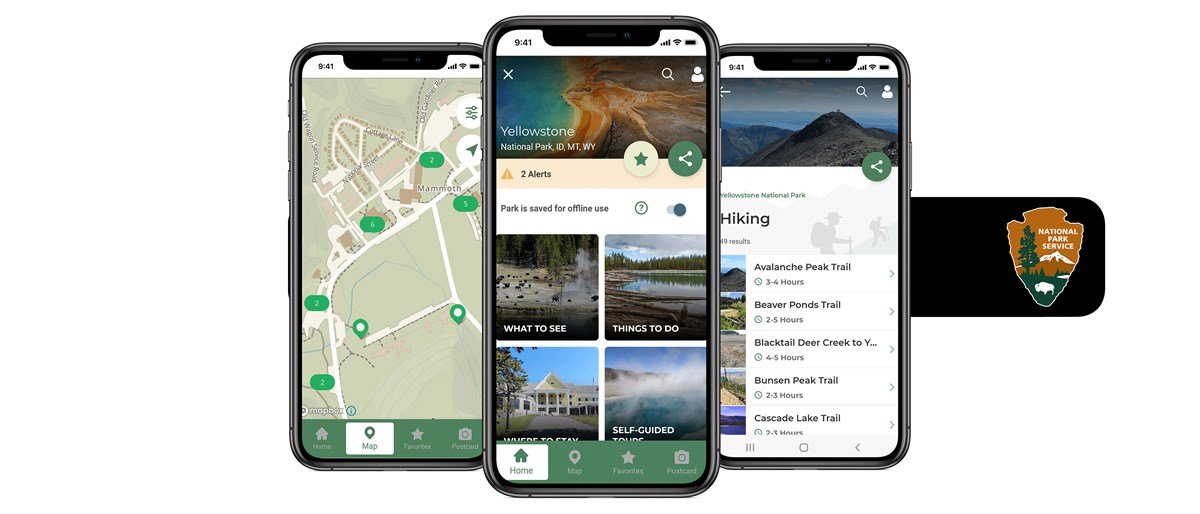Plan The Perfect Yellowstone Vacation
By: Sarah Reish
This year is a celebration of 150 years of our amazing National Parks, which is both historic and incredible. We are so excited to be a part of it. Our goal is to help you plan the perfect trip into Yellowstone National Park. We are sharing important things to note, providing answers to common questions we hear, and offer tips and suggestions. We love going to the park and try to make it out as often as possible. Which means some items may be things we learned along the way. Steve has been enjoying the park since he was a child and going with his family. So here are our top tips to plan the perfect Yellowstone vacation.
Photo By: Live WYld
Photo By: Live WYld
Tip #1: Plan for multiple days in the park
Did you know Yellowstone National Park is 3,472 square miles? It is massive and almost impossible to explore in two (2) days. We tell our family and friends to plan for a minimum of two days in the park to get the most out of it. 96% of Yellowstone is located in Wyoming, 3% is in Montana, and the park also borders into Idaho with 1%.
Which features matter most? If you have a tight schedule, identify the things most important and plan your trip accordingly. Use the map to ensure you get to visit your top picks.
Wildlife
Thermal features
Waterfalls
Historic areas
Hikes
It’s a must: There are two loops, the lower and upper loops. Choose your top must see spots and hit them early, then spend the day exploring the scenic hikes and wildlife in the afternoons. You really should plan your routes based on the gate towns. We make the most out of our time by packing picnics rather than waiting to eat in the restaurants. It also allows us to tailgate and watch the wildlife.
The East Gate is Cody, WY - you get to travel through Shoshone National Forest - the 1st National Forest to access this gate.
Northeast Gate is Cooke City, MT - access via the Absaroka Mountains and Sunlight Basin.
North Gate is Gardiner, Mt.
West Gate is West Yellowstone, ID.
South Gate is connected to Grand Teton National Park via John D. Rockefeller Memorial Parkway.
Photo By: Live WYld
Photo By: Live WYld
Tip #2: Plan for any weather
Many people forget that we are part of the Rocky Mountains and we are pretty far north. This means weather differs at different elevations and it can change quickly. For instance, it may almost be June, but Yellowstone is getting snow. Next week it could be in the 80’s.
It’s a must: Pack or wear layers. Wear a t-shirt, have a sweatshirt, sturdy shoes, and a rain jacket easily accessible.
Tip #3: Plan for little to no connectivity
There are few areas within Yellowstone that have service/signal so plan on being disconnected while in and around the park. The park gates have maps they will provide you to help you get to scenic areas around Yellowstone.
It’s a must: The Yellowstone App can be downloaded and used without signal. We use it all the time.
Credit: YNP
Tip #4: Plan your time to view wildlife
Seeing wildlife isn’t promised, mainly because visitors stick to the roads and occasional hiking trails, and Yellowstone is massive. The wildlife in Yellowstone is diverse and year round. If you are wanting to see and photograph wildlife, your best plan would be early morning and evening. Much of the wildlife feeds during the early and late hours so arrive early or plan to stay late.
It’s a must: The early and late hours are our favorite. During the day, we have learned some of the more wild animals tend to nap. Pack snacks and choose a location based on the wildlife you are most wanting to see.
Tip #5: Play it safe
The posted safety notices should be taken seriously. It shouldn’t “bear” repeating, but we need to. Each year we hear about accidents because of people going off trails or getting too close to animals. Yellowstone is protected, but the animals are wild and not trained, nor are they cared for. You can be hurt or killed by not adhering to these safety notices, it happens every year.
It’s a must: Here is the reality. Thermal features mean unstable ground. People fall through what they believe to be solid ground into boiling hot thermal springs and are seriously hurt and have even died. Stay on the path and boardwalks at all times. Yellowstone also isn’t a petting zoo. These are wild animals and you should stay away. I PROMISE, you cannot outrun them. Here is a helpful graphic provided by Yellowstone National Park. Bears and wolves hunt for their food… they are predators.
Credit: YNP
Important details
The following are important details we have figured out or we think are super important. If you know of any additions, share in the comments!
You can speed up gate entries by pre purchasing your park pass online. The more people that do this, the quicker the entry.
If you see wildlife and want to view it, pull off to the side of the road. Don’t stop on the road because it backs up traffic.
Don’t trash the bathrooms. The park staff do an amazing job keeping it clean, but there are more of us than there are of them. Be respectful.
Pets are allowed, but there are strict rules and policies.
They cannot be on boardwalks, hiking trails, or backcountry and no further than 100 ft off of the road.
Your pet must be in the car, crate or a leash no longer than 6 ft.
Head to the park!
This is a stunning part of our country and such an integral part of our country's history. Be sure to take photos and share them on social media. Tag us @LiveWYldMag and use #LiveWYld and Yellowstone’s birthday hashtag: #Yellowstone150







